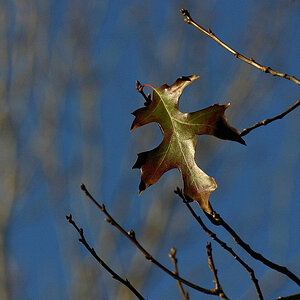I just started scanning all of my film shots. The question is since I scan it anyways should I shot B&W film or Color Film (I like slides since I get a better scan) and convert it to B&W? Another issue with this is fewer labs are processing B&W film. I don't develop my own film, I use a professional lab. Thanks
Navigation
Install the app
How to install the app on iOS
Follow along with the video below to see how to install our site as a web app on your home screen.

Note: This feature currently requires accessing the site using the built-in Safari browser.
More options
You are using an out of date browser. It may not display this or other websites correctly.
You should upgrade or use an alternative browser.
You should upgrade or use an alternative browser.
B&W film or Color Film scanned
- Thread starter jcrutcher
- Start date
Josh66
Been spending a lot of time on here!
- Joined
- Oct 31, 2007
- Messages
- 14,593
- Reaction score
- 1,239
- Location
- Cedar Hill, Texas
- Can others edit my Photos
- Photos NOT OK to edit
I shoot both... I don't think I've ever converted color scans to B&W, but I see no reason that you couldn't do it...
I do think that B&W film looks better than color converted though.
Not to mention that B&W film has low ISO options that just don't exist for color film, and it's usually sharper.
I do think that B&W film looks better than color converted though.
Not to mention that B&W film has low ISO options that just don't exist for color film, and it's usually sharper.
Alpha
Troll Extraordinaire
- Joined
- Mar 15, 2005
- Messages
- 5,451
- Reaction score
- 41
- Location
- San Francisco
- Can others edit my Photos
- Photos NOT OK to edit
One of the great things about film is that you can pick one that suits your subject matter. Sometimes that's B&W over color or vice versa. Other times it's one color film over another or on B&W film over another.
Orrin
No longer a newbie, moving up!
I shoot both... I don't think I've ever converted color scans to B&W, but I see no reason that you couldn't do it...
I do think that B&W film looks better than color converted though.
Not to mention that B&W film has low ISO options that just don't exist for color film, and it's usually sharper.
If you use an image editor that has a 'Channel Mixer', you can ajust the amount of the red, green, and blue record to include in your monochrome image. Sort of like shooting with filters on B&W film.
Vautrin
No longer a newbie, moving up!
- Joined
- Jun 26, 2008
- Messages
- 927
- Reaction score
- 58
- Location
- It changes
- Website
- www.withoutamapphotography.com
- Can others edit my Photos
- Photos OK to edit
The thing with shooting in color is that you can always conver to black and white in post processing
You will never convert a black and white image to a true color image in post.
However, there are many advantages to shooting black and white film. For instance, a color filter can change the feel of your B+W image, but will just look strange on color film. Also, as O mentioned you have more types of B+W then color film...
I think the best thing is to take shots with different kinds of film and see what you like. Some people hate B+W, some love it and prefer shooting B+W film to color...
Also -- if you look around the net you can find a lab that will develop your B+W film through the mail. They'll also probably be cheaper then your local photolab (B+W film is in general cheaper to buy and develop)
You will never convert a black and white image to a true color image in post.
However, there are many advantages to shooting black and white film. For instance, a color filter can change the feel of your B+W image, but will just look strange on color film. Also, as O mentioned you have more types of B+W then color film...
I think the best thing is to take shots with different kinds of film and see what you like. Some people hate B+W, some love it and prefer shooting B+W film to color...
Also -- if you look around the net you can find a lab that will develop your B+W film through the mail. They'll also probably be cheaper then your local photolab (B+W film is in general cheaper to buy and develop)
cooltouch
TPF Noob!
There's also Kodak's BW400CN, which is a C-41 film and can be developed at any lab that processes color print film. And BW400CN is a very nice B&W film, too. Google it and look at some of the examples. Very nice and smooth.
I disagree about there being more B&W emulsions than color film, though. There are still many different color emulsions to chose from in all ISOs. My favorite color print film is Ektar, which is ISO 100. My favorite color slide film -- for now -- is Kodak's Elite Chrome, also ISO 100. And my favorite B&W film -- for now -- is Kodak's Tri-X Professional 400TX.
I've converted color to B&W in post, and had decent results, but it won't match B&W. It can't because B&W generally has a wider dynamic range than color print film and a much wider range than color slide film. So B&W will catch details in the highlights and shadows that color print film can't before it blocks up or blows out.
I disagree about there being more B&W emulsions than color film, though. There are still many different color emulsions to chose from in all ISOs. My favorite color print film is Ektar, which is ISO 100. My favorite color slide film -- for now -- is Kodak's Elite Chrome, also ISO 100. And my favorite B&W film -- for now -- is Kodak's Tri-X Professional 400TX.
I've converted color to B&W in post, and had decent results, but it won't match B&W. It can't because B&W generally has a wider dynamic range than color print film and a much wider range than color slide film. So B&W will catch details in the highlights and shadows that color print film can't before it blocks up or blows out.
Last edited:
Josh66
Been spending a lot of time on here!
- Joined
- Oct 31, 2007
- Messages
- 14,593
- Reaction score
- 1,239
- Location
- Cedar Hill, Texas
- Can others edit my Photos
- Photos NOT OK to edit
Pretty much the only Kodak film I like. Good stuff.There's also Kodak's BW400CN, which is a C-41 film and can be developed at any lab that processes color print film. And BW400CN is a very nice B&W film, too.
All I meant was that there are low ISO options (50, 25) that either don't exist, or are hard to find in color... Wasn't saying that there are more emulsions.I disagree about there being more B&W emulsions than color film, though. There are still many different color emulsions to chose from in all ISOs.
I think the biggest differences in converting color film to B&W (that just seems weird to me) and B&W film would be in the contrast and grain...
cooltouch
TPF Noob!
Okay, probably true about the low ISO emulsions. Velvia's the slowest I can think of, at ISO 50. I don't know of any print color emulsions slower than ISO 100. Heck, far as that goes, I don't know of any B&W emulsions slower than ISO 100 either. Must be some sort of specialized emulsions?
I think probably the biggest reason for not finding any low speed emulsions anymore is that the technology has continued to advance. Kodak claims that Ektar 100 has the finest grain of any commercially available color print film, and based on my experiences with it, I'm not inclined to disagree.
As for B&W, I have a bunch of rolls of ancient Plus X Pan (ISO 125) that's been frozen for the past 25 years that I'm slowly working through. Back in the day it was well known for its very fine grain. But compared to the modern Tri-X Professional 400, honestly I don't see much difference.
Regarding converting color print film to B&W, it seems to me that converted color print film will appear to have more contrast when viewed side by side with a B&W example, since dialing up the contrast blocks up the shadows and blows out the highlights, which will correspond to the smaller dynamic range of color print film.
I think probably the biggest reason for not finding any low speed emulsions anymore is that the technology has continued to advance. Kodak claims that Ektar 100 has the finest grain of any commercially available color print film, and based on my experiences with it, I'm not inclined to disagree.
As for B&W, I have a bunch of rolls of ancient Plus X Pan (ISO 125) that's been frozen for the past 25 years that I'm slowly working through. Back in the day it was well known for its very fine grain. But compared to the modern Tri-X Professional 400, honestly I don't see much difference.
Regarding converting color print film to B&W, it seems to me that converted color print film will appear to have more contrast when viewed side by side with a B&W example, since dialing up the contrast blocks up the shadows and blows out the highlights, which will correspond to the smaller dynamic range of color print film.
Last edited:
Josh66
Been spending a lot of time on here!
- Joined
- Oct 31, 2007
- Messages
- 14,593
- Reaction score
- 1,239
- Location
- Cedar Hill, Texas
- Can others edit my Photos
- Photos NOT OK to edit
There are a few, actually.Heck, far as that goes, I don't know of any B&W emulsions slower than ISO 100 either. Must be some sort of specialized emulsions?
A lot of the ISO 25 stuff is specialized film (tec-pan, and stuff like that - document film), but pretty much all of the ISO 50 stuff is just 'normal' B&W film.
Roll Film
^^^ What B&H carries for 35mm print & slide film, ISO 25-64. Other than the Velvia and T64 - every single one is B&W.
Yeah, there isn't exactly a huge selection - but there is a selection...
kimsmarkin
TPF Noob!
- Joined
- Sep 5, 2010
- Messages
- 6
- Reaction score
- 0
- Location
- california
- Can others edit my Photos
- Photos OK to edit
New certification of the Federal Aviation Administration explosive detection systems used in U.S. airports scan (x-rays) in checked baggage. This high-scanning equipment is also used in many airports, not American. The new team will fog any unprocessed film that passes through the scanner.
Josh66
Been spending a lot of time on here!
- Joined
- Oct 31, 2007
- Messages
- 14,593
- Reaction score
- 1,239
- Location
- Cedar Hill, Texas
- Can others edit my Photos
- Photos NOT OK to edit
I know how to do it, I just meant that if I wanted B&W pictures, I would just use B&W film...I shoot both... I don't think I've ever converted color scans to B&W, but I see no reason that you couldn't do it...
I do think that B&W film looks better than color converted though.
Not to mention that B&W film has low ISO options that just don't exist for color film, and it's usually sharper.
If you use an image editor that has a 'Channel Mixer', you can ajust the amount of the red, green, and blue record to include in your monochrome image. Sort of like shooting with filters on B&W film.
Checked baggage gets a much higher dose of X-rays than carry-on... If you're traveling with film, bring it carry-on, and have it hand inspected, if possible.New certification of the Federal Aviation Administration explosive detection systems used in U.S. airports scan (x-rays) in checked baggage. This high-scanning equipment is also used in many airports, not American. The new team will fog any unprocessed film that passes through the scanner.
Helen B
TPF Noob!
- Joined
- Sep 16, 2007
- Messages
- 3,296
- Reaction score
- 467
- Location
- Hell's Kitchen, New York
- Can others edit my Photos
- Photos NOT OK to edit
Regarding converting color print film to B&W, it seems to me that converted color print film will appear to have more contrast when viewed side by side with a B&W example, since dialing up the contrast blocks up the shadows and blows out the highlights, which will correspond to the smaller dynamic range of color print film.
I haven't found that to be true. Modern colour print film has a very wide dynamic range - usually at least 11 stops - and it produces quite a soft image if scanned in a way that captures its full density range (which is also quite high). Whether you lose shadow and highlight detail or not as you increase the contrast is up to you.
Best,
Helen
Similar threads
New Topics
-
-
-
Instax Wide 300 Lens cover broken, not shutting properly
- Latest: PianoMan343
-


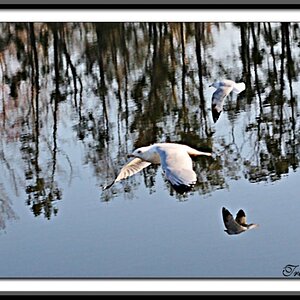
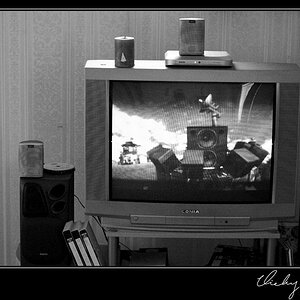
![[No title]](/data/xfmg/thumbnail/41/41901-789e8104ff95e5862c8f07611e3c34c0.jpg?1619739938)
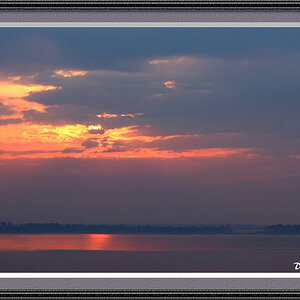
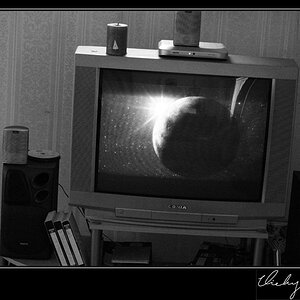
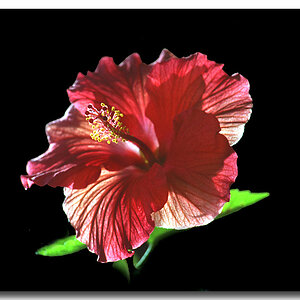



![[No title]](/data/xfmg/thumbnail/41/41900-d02b27da6248f10da25edf2413570222.jpg?1619739936)
